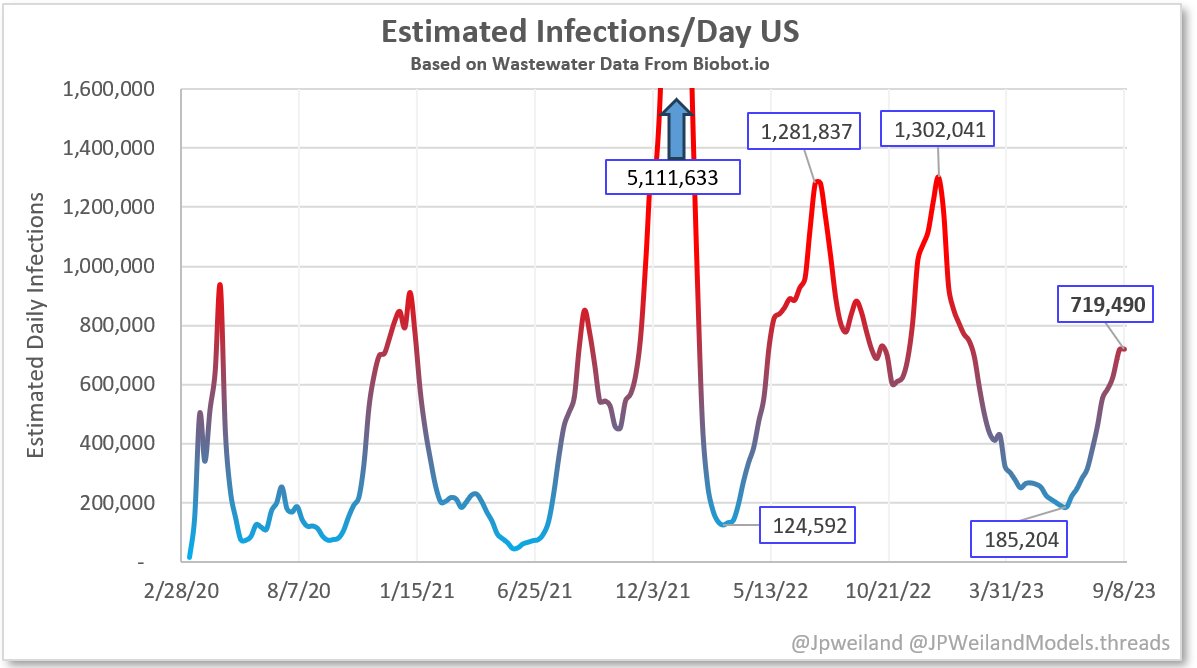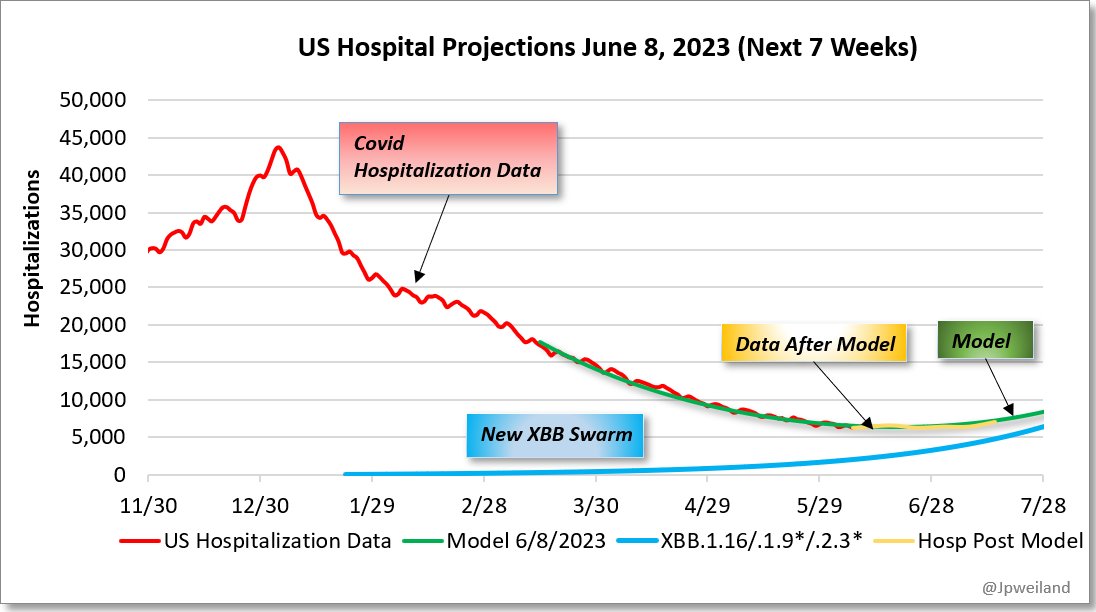September 8th US update:
Community spread of Covid is "high", with a correction upwards last week as well. Current estimates:
🔸720,000 new infections/day
🔸1 in every 460 new people were infected today
🔸1 in every 46 people currently infected
Community spread of Covid is "high", with a correction upwards last week as well. Current estimates:
🔸720,000 new infections/day
🔸1 in every 460 new people were infected today
🔸1 in every 46 people currently infected

I plan on updating my forecast model in the next week for the next month's outlook.
• • •
Missing some Tweet in this thread? You can try to
force a refresh

 Read on Twitter
Read on Twitter
















